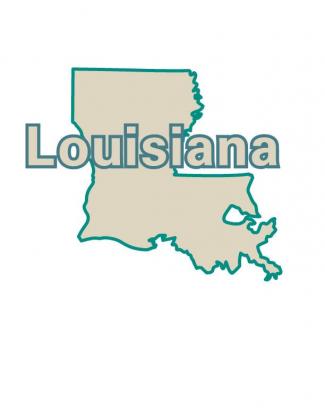
Jim Bradshaw
The orphan train museum in Opelousas, which celebrates its 10th anniversary this month, chronicles a remarkable story of children who found new lives in south Louisiana.
Some 2,000 children were sent to south Louisiana from the New York Foundling Hospital operated by Mother Elizabeth Seton’s Sisters of Charity. They were part of an adoption program that between 1854 and 1929 sent more than 150,000 children to new homes in rural communities across the nation.
The museum, at 223 South Academy in Opelousas, is the only one of its kind in Louisiana and second in the nation to the Orphan Train Museum in Concordia, Kansas. It is open Tuesday through Friday from 10 a.m. to 3 p.m. and on Saturdays from 10 a.m. to 2 p.m. Admission is $3.
The first orphan train came to Opelousas in April 1907 with about 60 children aboard, according to Flo Inhern, who led the drive to create the museum. It was a memorable, and in many ways heart-rending, occasion. I don’t find mention of that event in Opelousas newspapers of the day, but a small item in the St. Martinville Messenger in May 1908 describes the arrival there of a typical orphan train.
“A carload of orphan babies . . . passed through here Thursday” the report said. “Six or seven of them were given away here. … As each baby was brought forward and given over to the adoptive parents, everyone crooked their necks to catch a glimpse of the wee one. The scene was a pathetic one and … as the train pulled out the little children stood against the window glasses and some waved at the disappearing crowd who had gathered to see them.”
The orphanage in New York provided little more than room and board, but it was the only home most of the children had ever known. They were confused and scared when, identified only by a numbered piece of paper pinned to their clothing, they were put onto trains destined for an unknown places and unknown people.
Inhern’s husband was a descendant of one of the children. placed in Louisiana through the Archdiocese of New Orleans (before the Diocese of Lafayette was separated from it).
“On Sunday, the priest talked in his sermon about the hardships of New York and about the children in the foundling hospital,” she said in an interview several years go. “People of the area were asked to look into their hearts and bring these children into their homes.”
Elta Guillory Reed was a young girl in Opelousas in 1908 when one of the orphan trains arrived. She described that day for her daughter, Margaret Reed Fontenot, many years later.
“The crowds of people were in a semi-circle waiting,” Fontenot wrote in an article for La Voix des Prairies, the publication of the Evangeline Genealogical and Historical Society. “They witnessed only three orphans coming down the steps, led by a nun.
“The first orphan was a boy about 3 years old, meticulously dressed in black pants and starched white shirt, neatly combed, and evidently very scared. He ... had a tag with a number on it. The nun called out a name and a man came forward, identified himself, and took the child — who was screaming and kicking — through the crowd to meet his wife.
“The second boy whimpered but did not carry on as the first one had. ... The third orphan was a pretty little blonde girl in a white dress with a blue apron who did not noticeably cry, but hung her head as she was led away by her new father.”
A collection of Jim Bradshaw’s columns, Cajuns and Other Characters, is now available from Pelican Publishing. You can contact him at jimbradshaw4321@gmail.com or P.O. Box 1121, Washington LA 70589.
